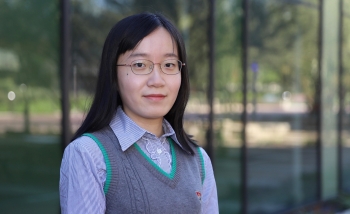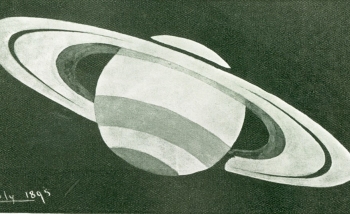Where the universe is at its most extreme, most violent, most destructive – that’s where Will East wants to go, theoretically speaking.
From the relative safety of a chalkboard or his computer, East explores what happens when very massive and powerful things smash into one another, creating shockwaves that ripple spacetime itself.
In this gravitational demolition derby of colliding stars and black holes, East sees incredible potential to tease out answers to some of the biggest mysteries in astrophysics.
As one of Perimeter Institute’s newest faculty members, he feels he is in the right place, at the right time, to extract insights from the violent side of the universe.
He joined Perimeter – first as a Director’s Fellow in 2016, then as a faculty member in early 2018 – just as the long-sought detection of gravitational waves by the LIGO collaboration had opened up vast new possibilities in astrophysics.
LIGO’s detection of shockwaves created by the distant collision of two black holes more than a billion years ago was both a triumph of experimental technology (for which the team earned a Nobel Prize) and a windfall for scientists like East, for whom gravitational waves represent a new tool for decoding the universe.
“I want to understand gravity at its most extreme,” he says. “What happens when black holes or extremely dense stars collide? How is this imprinted on the gravitational waves they produce? How can the vast rotational energy of spinning black holes be tapped into [in order] to power astrophysical phenomena?”
By deciphering these puzzles, East says, scientists can hone their understanding of how the universe really works, putting existing models (including Einstein’s foundational theory of gravity) to the test.
To tackle those questions, East uses numerical methods and high-performance computing, along with plenty of old-fashioned blackboard collaboration with peers at Perimeter and partners at Princeton, Stanford, and elsewhere.
Just as important as collaboration within his subfield, he says, is the diversity of expertise he has found at Perimeter, where ideas and insights cross-pollinate.
“There’s always a lot going on here,” said East, who is among the founding researchers of Perimeter’s new cosmology hub, the Centre for the Universe. “People at Perimeter are very interactive, and interested in questions outside of their specialties – it’s great.”
Further exploration
About PI
Perimeter Institute is the world’s largest research hub devoted to theoretical physics. The independent Institute was founded in 1999 to foster breakthroughs in the fundamental understanding of our universe, from the smallest particles to the entire cosmos. Research at Perimeter is motivated by the understanding that fundamental science advances human knowledge and catalyzes innovation, and that today’s theoretical physics is tomorrow’s technology. Located in the Region of Waterloo, the not-for-profit Institute is a unique public-private endeavour, including the Governments of Ontario and Canada, that enables cutting-edge research, trains the next generation of scientific pioneers, and shares the power of physics through award-winning educational outreach and public engagement.
You might be interested in

Spiralling light from M87’s supermassive black hole reveals strong magnetic fields
November 8, 2023



